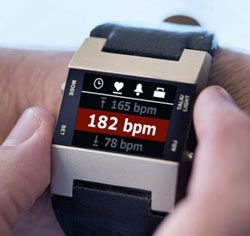Digital Safety Net for Senior Citizens at Home

They are using sensors attached to the body to measure important parameters including movement and blood oxygen levels. The data is then passed on to a medical center, which immediately sends response personnel in the event of an emergency. The magazine “Pictures of the Future” reports that the first prototypes should be available in mid-2011. The work is being carried out at Siemens Corporate Technology, and the project is funded by the Germany’s Research Ministry.
In 25 years more than half of Germany’s population will be over age 50, and a third of the populace will be over 60. Most seniors want to live in their own homes for as long as possible, but many are afraid to be alone without help in an emergency. Networked sensors, which make remote diagnoses possible, can ensure that won’t happen. In cooperation with physicians, Siemens experts are developing various scenarios.
The researchers are working on a device worn on the wrist, for example, that also measures acceleration rates. If a senior has fainted, for example, the solution can recognize the absence of the micro-movements characteristic of sleep. Patients who suffer chronic pain would be additionally provided with a “smart band-aid” that measures temperature, pulse and blood oxygenation. It is worn like a bandage on the upper arm and consists of a flexible film in which a transmitter, receiver, data evaluation circuitry, and a battery are integrated.
A radio chip in the wrist device sends all data to a communication node, which forwards the information over the Internet to a medical center. A special security architecture ensures that the data is protected along the entire transmission path, and access to the information is also stringently controlled.
What’s more, the devices should feature intuitive operation, to enable the seniors to call for assistance by means of the emergency button on the wristband or by speaking directly with the medical center on a smart phone in hands-free speaking mode. In mid-2011 students will test the sensors worn on the body and the data transfer in a specially designed demonstration lab.
The technology will also be tested with seniors in good health. The Siemens experts are sure that in a few years it will be impossible to imagine older people going about their everyday lives without such smart aids.
Media Contact
More Information:
http://www.siemens.com/researchnewsAll latest news from the category: Information Technology
Here you can find a summary of innovations in the fields of information and data processing and up-to-date developments on IT equipment and hardware.
This area covers topics such as IT services, IT architectures, IT management and telecommunications.
Newest articles

A universal framework for spatial biology
SpatialData is a freely accessible tool to unify and integrate data from different omics technologies accounting for spatial information, which can provide holistic insights into health and disease. Biological processes…

How complex biological processes arise
A $20 million grant from the U.S. National Science Foundation (NSF) will support the establishment and operation of the National Synthesis Center for Emergence in the Molecular and Cellular Sciences (NCEMS) at…

Airborne single-photon lidar system achieves high-resolution 3D imaging
Compact, low-power system opens doors for photon-efficient drone and satellite-based environmental monitoring and mapping. Researchers have developed a compact and lightweight single-photon airborne lidar system that can acquire high-resolution 3D…





















